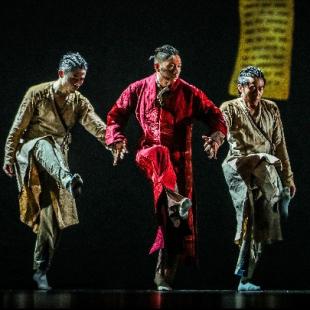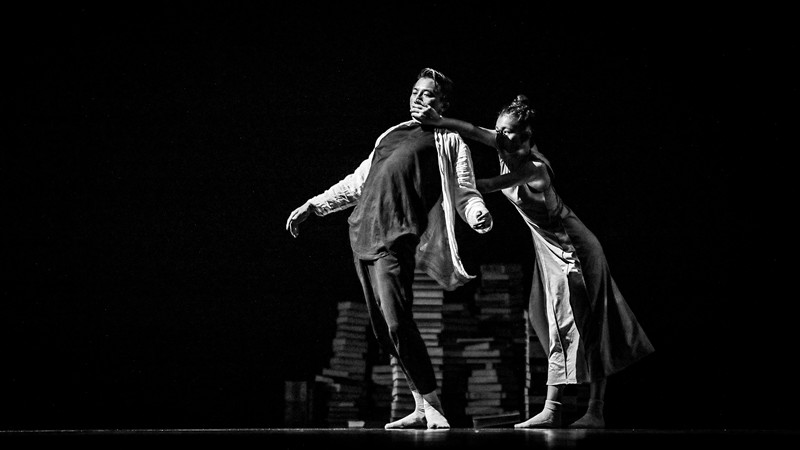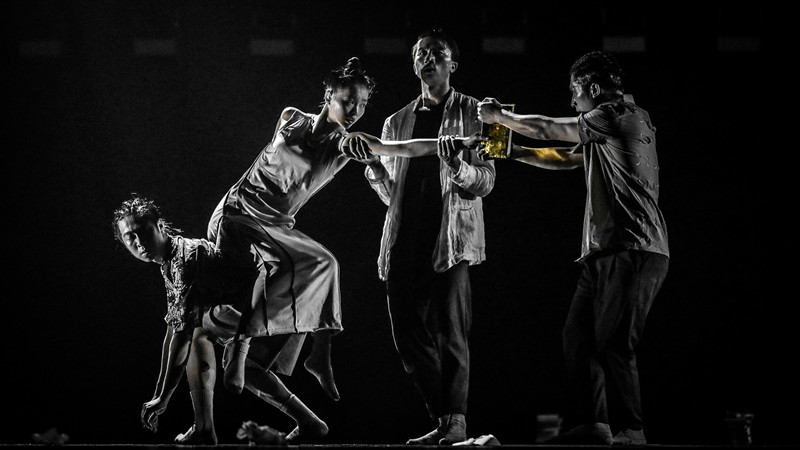
Dance drama reclaims Silk Road spirit for modern era
A Silk Road dance drama being toured around China carries profound meaning for the country’s people, giving perspective on both a time long past and contemporary life.
An Individual Soliloquy, part of famed dancer-choreographer Yabin Wang’s ninth season with the studio that bears her name, tracks the progress made by the transcontinental trade route and its eventual dissolution. What separates Wang’s work from others about this pivotal period of time is its connection to the now, both through style and subject matter. There’s a pulsating primacy to the movement, forcing audience members to sit up and take notice. Rather than pure modernism, Soliloquy gives us something outside the traditional-modern dichotomy, blending influences seamlessly and provocatively.

Jointly choreographed by Yabin and Japanese dancer and choreographer Shintaro Hirahara, Soliloquy explores the modern condition through reflection on the ancient Silk Road. Kumarajiva, the monk who translated Buddhist texts from Sanskrit to Chinese in the fifth century, and the connection it has with urban dwellers living in modern society today. In the first section, the story delves into life in the present day, showcasing the deep disaffection that runs rampant among city dwellers.
Few dancers make eye contact, striding around the stage absorbed in their own worlds. There’s no sense of solidarity or togetherness; everyone marches to the beat of their own drummer, even in duet sections and group movements. This atomized state is alienation personified - no collective identity or project motivates people to work together, and is characterized by rapid, jerky motions without thought for those nearby. It’s a tragically accurate crystallization of the 21st century that stays tightly plotted and performed despite its premise of disorganization.

Contrasted with the herky-jerky movement of the first section, the splendor of the Silk Road is demonstrated in the second half by Yabin through fluid motion and graceful steps. As we follow Kumarajiva on his journey, with the young city wanderer always around as a linkage between the present and past, we can see the melding and interaction of disparate cultures. It’s this spirit that the dance drama implores us to return to, a time when national boundaries still existed but trust and respect reigned. The Silk Road, Soliloquy seems to say, wasn’t just about trade and commerce; it was an idea, one that can be reclaimed in the current era.
This is emphasized with a link between Kumarajiva and the modern wanderer at the end of the piece. Through remembrance and tribute, we should be able to revitalize this spirit and return to it. Rebuilding international relationships and creating a new atmosphere of trust is an essential part of this mission.
Soliloquy is more than a celebration of a moment from the distant past, it’s a call to action. We would do well to learn its lesson and apply it in our daily lives.